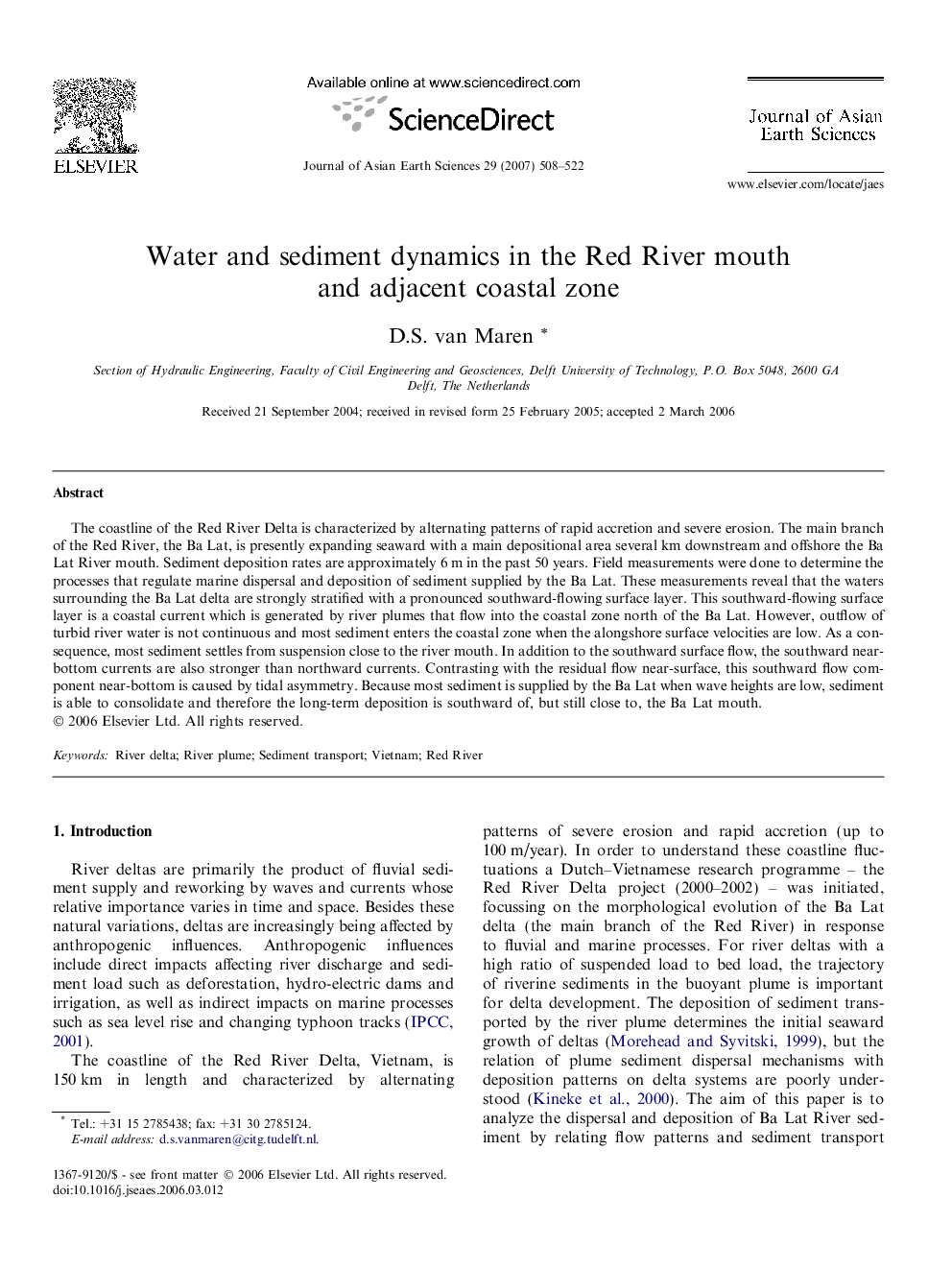| Article ID | Journal | Published Year | Pages | File Type |
|---|---|---|---|---|
| 4732789 | Journal of Asian Earth Sciences | 2007 | 15 Pages |
The coastline of the Red River Delta is characterized by alternating patterns of rapid accretion and severe erosion. The main branch of the Red River, the Ba Lat, is presently expanding seaward with a main depositional area several km downstream and offshore the Ba Lat River mouth. Sediment deposition rates are approximately 6 m in the past 50 years. Field measurements were done to determine the processes that regulate marine dispersal and deposition of sediment supplied by the Ba Lat. These measurements reveal that the waters surrounding the Ba Lat delta are strongly stratified with a pronounced southward-flowing surface layer. This southward-flowing surface layer is a coastal current which is generated by river plumes that flow into the coastal zone north of the Ba Lat. However, outflow of turbid river water is not continuous and most sediment enters the coastal zone when the alongshore surface velocities are low. As a consequence, most sediment settles from suspension close to the river mouth. In addition to the southward surface flow, the southward near-bottom currents are also stronger than northward currents. Contrasting with the residual flow near-surface, this southward flow component near-bottom is caused by tidal asymmetry. Because most sediment is supplied by the Ba Lat when wave heights are low, sediment is able to consolidate and therefore the long-term deposition is southward of, but still close to, the Ba Lat mouth.
